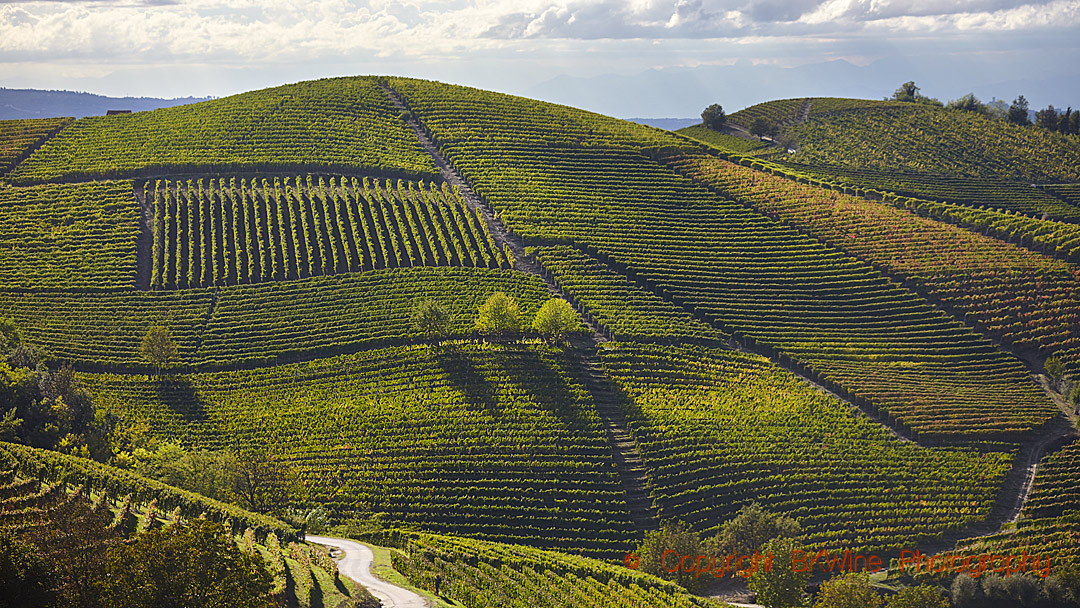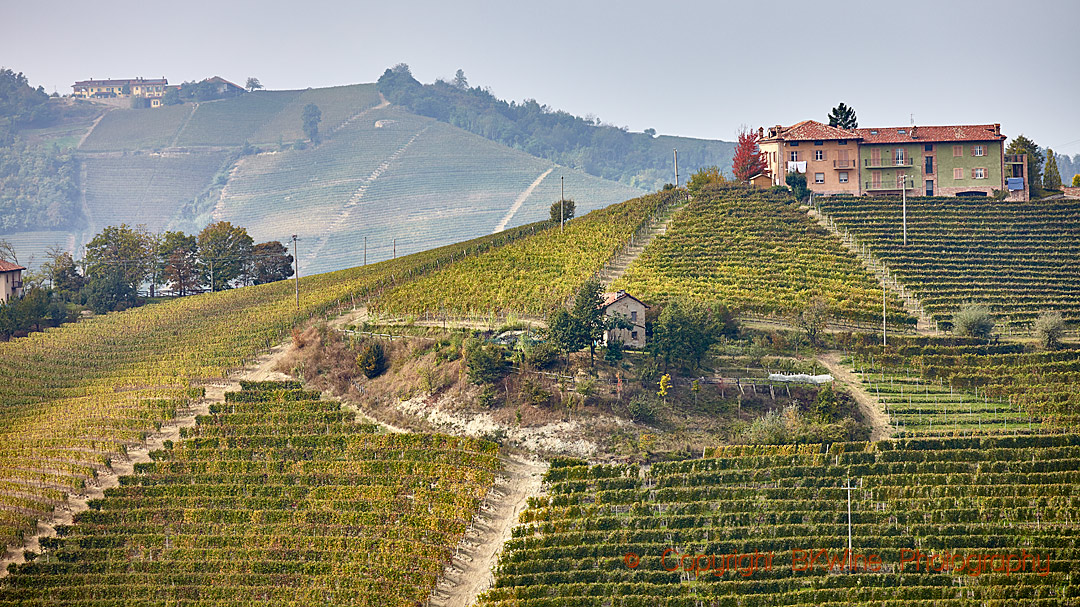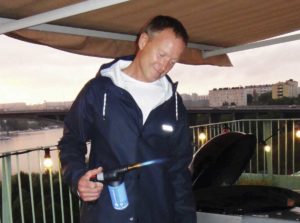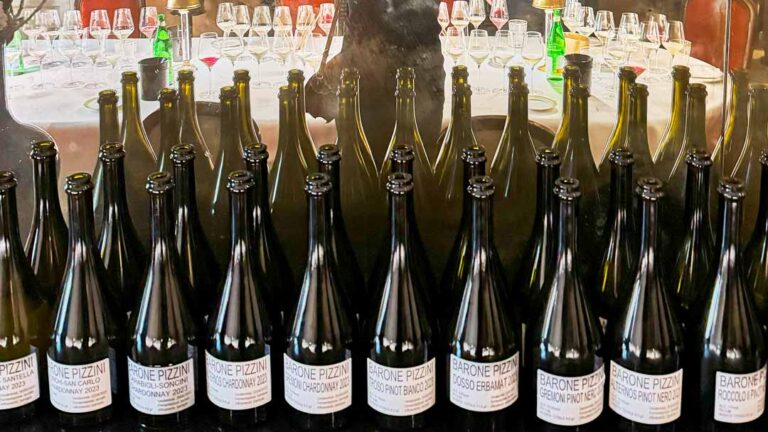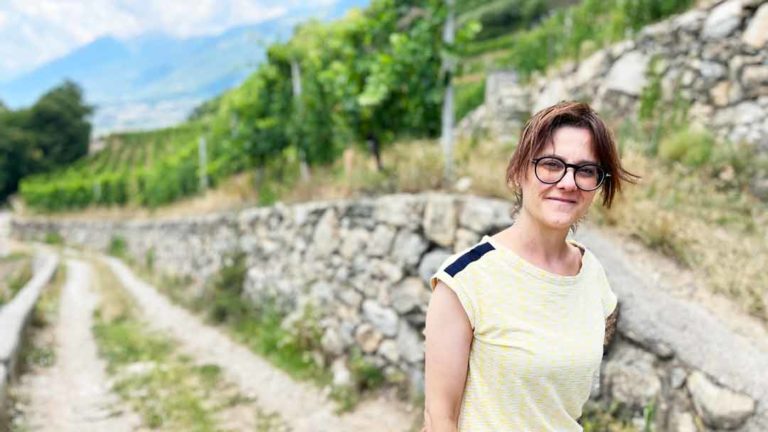“With knowledge and modern technology you can get an elephant to dance ballet”. The evening’s tasting offered a lot of new insights, nuances and wonderful metaphors. Among other things, the link between bananas and wine. A trip from two to 30 hectares over five generations in Monforte d’Alba. The last two generations sat at our table and gave us a whole new approach to some parts of winemaking. 2021 will be the 50th anniversary of their wine under their own label, but you can with good conscience start celebrating now.
Winemaker Marco Parusso could not, we were told, speak a word of English. His dear daughter, Giulia Parusso, was able to enthusiastically translate what her father told her into pure English. It worked fine up to when the temperature and the enthusiasm increased, then Marco Parusso suddenly spoke quite good English he too.
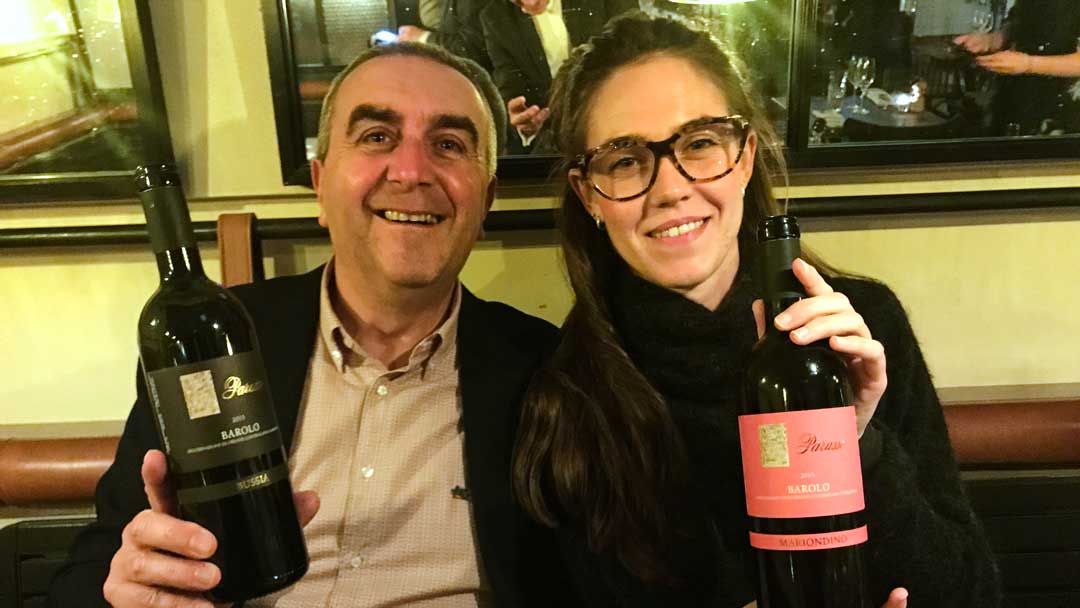
The first glass was poured and we were told about their 10 hectares with sauvignon blanc. 2017 Parusso Sauvignon “Rovella”. A soft and pleasant style signalling the grape variety, light and softly embedded tones of oak. Solid body and a delicious hint of bitterness from the skins. One year on new barrels and with batonnage. On our side of the table we looked at each other and wondered if we heard that right. One year in new barrels, can that be right? We were in agreement that so nicely embedded oak in a very young wine did not rhyme with such a long time in new oak barrels, but obviously that was the case. The body and tones of maturity come, I would guess, from the procedure of stirring the lees in the barrel, batonnage. Very unexpected that sauvignon blanc would be one of the favourites in a Piedmont tasting.
A chanterelle toast with truffles was served with 2015 Parusso Barolo. A deliciously nutty, rich and elegant nose with a nice hint of vanilla. Clear but pleasantly light tannins, femininely beautiful and silky feel. Ready to be uncorked and enjoyed. My fellow tasters express their joy that the truffle season has started when Giulia counters that truffles are best in December when they have reached their optimum maturity. Nobody protests.
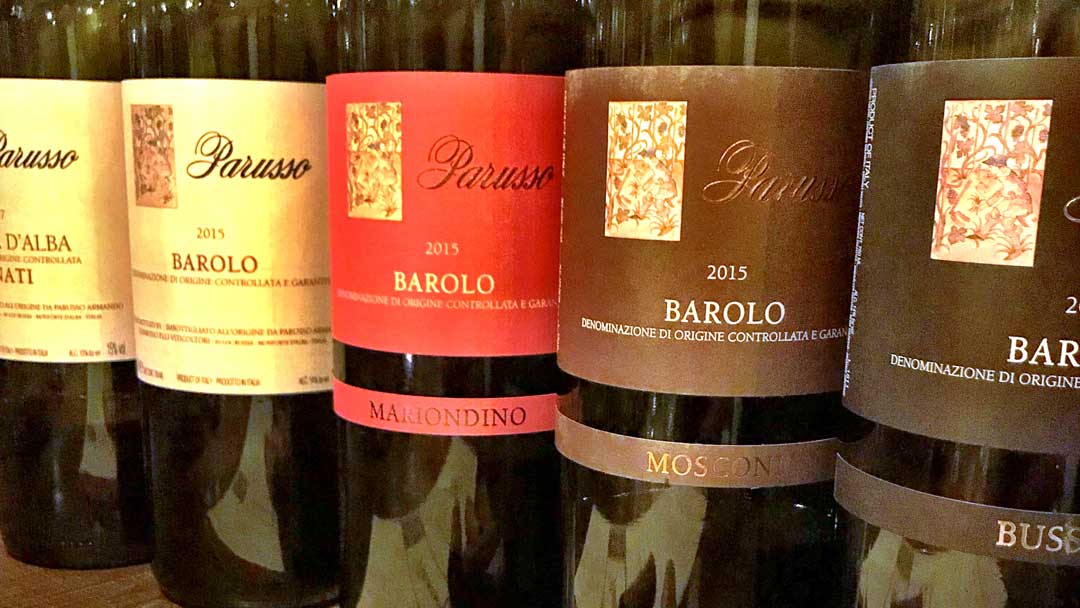
Generation four and five of the Parusso family at our table have definite views on more things than when truffles are to be enjoyed. Among other things, that the oak should dry a little longer before the barrels are made to obtain a denser wood. I am not entirely sure that I understood the story correctly, but if you just look at the oak character of their wines, it is difficult to get it better and more integrated.
We continue to taste and a tartar accompanies a 2015 Parusso Barolo Mosconi. Very grape-typical, masculine tones, tobacco and well integrated oak. Dense and intense. Mosconi differs markedly from the other wines with its broad-shouldered attitude, hard tannins, which also cries out for ageing. In fact, the only wine in their suite that was not easily accessible already. An wine that took over the performance. A top barolo that is probably better suited to grilled rather than raw meat.
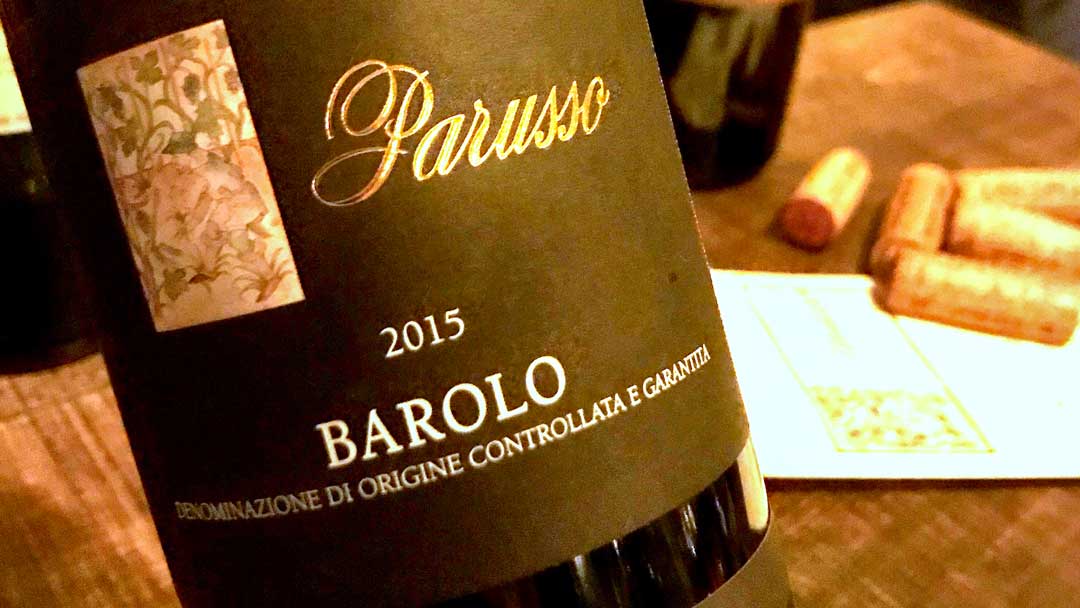
In parallel with the Mosconi, the 2015 Parusso Barolo Bussia was served and we are back to the elegance with extraordinarily beautiful and rich details. Comfortably silky and extremely stylish tannins. Most likely very age-worthy but there was a delicious freshness that invites you to drink it already.
The bananas then, how did they get into the picture?
At the table, the process from harvest to press was explained. Something that, instead of with urgency, happened with a stopover for three to five days. The grape bunches are placed in ventilated trays of about ten kilos and allowed to dry in ventilated rooms. The skins mature and the stalks absorb oxygen, which is beneficial for the wild-ferment process. “You don’t buy a green banana and bring it home and eat it before it’s ripe, do you?” Marco asks.
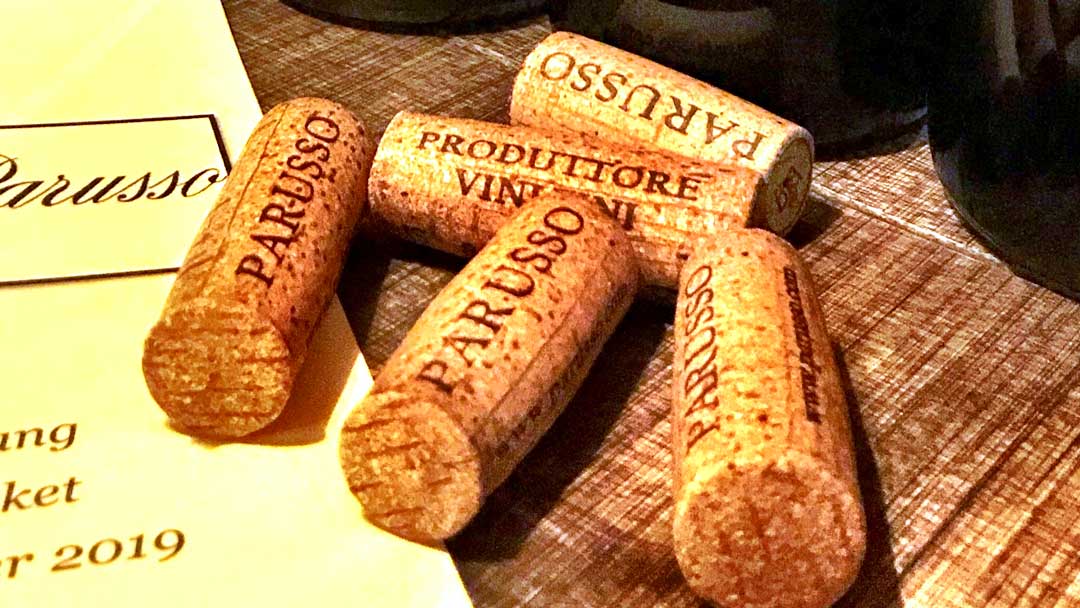
There were other distinct choices in their production. Long corks from French Diam based on beeswax glue to minimize cork taint. Another detail was dispensers that spread propolis from beehives in the production hall to keep unwanted bacteria away. It should be clean but not sterile. No cleaning products are needed, says Guilia, we only wash with hot water. If you do not come across propolis, or putty wax, in your everyday life, I can tell you that it is a product from beehives of resin and sap. Antibiotic and disinfectant.
All in all, the tasting was as interesting as delicious. Less talk about letting the terroir speak and more focus on technology, precision and choice of material. Powerful and, in my opinion, feminine and beautiful barolos. The drying process was something new to me and I had to surf to check out the products from the beehive. If you are curious about the organic products, visit kontak.bio . In Sweden the wines can be found in restaurants, some of which you can find on starwinelist.com.
Sven-Olof Johansson is a wine enthusiast in Stockholm with a long history of wine tasting experiences.
[box type=”info”]
Piedmont is known for its wines, its truffles and its beautiful landscape. All this and more you can enjoy on a wine and gastronomy tour to Piedmont with BKWine.
Travel to the world’s wine regions with the wine experts and the wine tour specialist.
Delicious wine tours. BKWine wine tours.
[/box]
